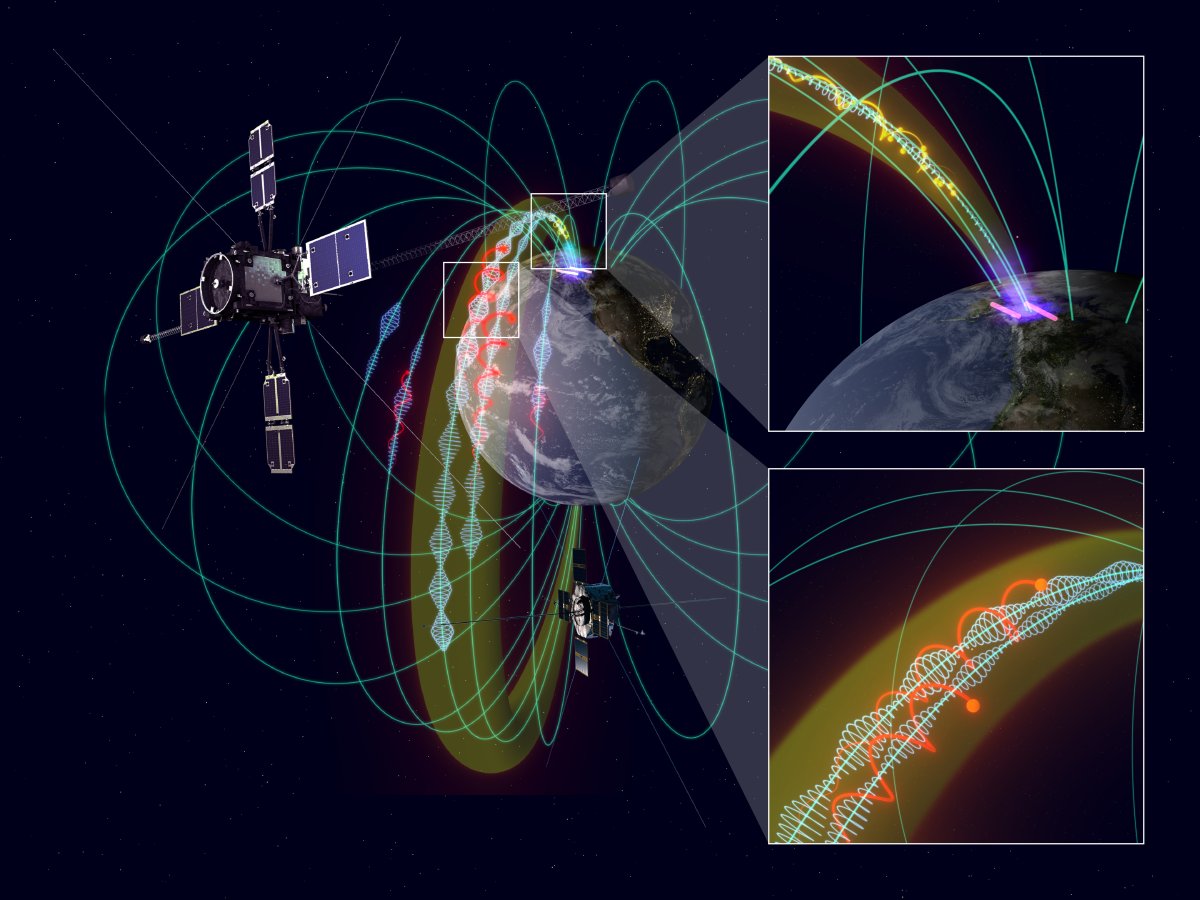UMN part of collaboration that confirms Propagation Path of Electromagnetic Waves from Space to Ground

Space physicists have theorized for over 50 years that a particular type of electromagnetic (EM) waves called EMIC (Electromagnetic Ion Cyclotron) waves propagate from space to the ground, but were unable to confirm the path that they took. Chris Colpitts is a researcher in the School of Physics and Astronomy who is part of an international collaboration that used data from four different sources to create a 3-D model of the propagation path.
“Confirmation of the path of these waves is crucial for understanding the energy exchange between electromagnetic waves and magnetospheric particle populations, including the radiation belts,” Colpitts said.
EM waves that occur naturally are perhaps best known for emitting particles that cause the Northern Lights, also cause the formation and the dissipation of radiation belts surrounding the Earth. These radiation belts can negatively impact spacecraft, so it is important to understand them. “Radiation belt particles and their precipitation into the atmosphere caused by EM waves can have significant consequences for everything from commercial air travel to GPS communications to the power grid,” Colpitts said. These EM waves propagate along the magnetic field lines of the Earth in both the northern and southern hemispheres.
Scientists have long known that EM waves help control the near-Earth space environment through such processes as the formation and dissipation of radiation in the Van Allen Belts as well as the emission of auroras. But because these waves can travel tens of thousands of kilometers from their points of origin, a full understanding of their effects on the space environment requires knowledge of where they’re generated and how they propagate—information that has been difficult to determine using standard, single-point observations.
The team gathered data from four different observation points: Japan’s Arase satellite and PWING ground station, the United States’ Van Allen Probes satellites, and Canada’s CARISMA ground-based magnetometer array. By comparing the observations obtained from each location, the researchers succeeded in centrally capturing how and where electromagnetic waves are generated in space as well as how these waves propagate to the ground. They discovered that the EM waves propagate a distance of approximately 50,000 km along straw-shaped “propagation paths”, and energize particles in the magnetosphere during their long journey. “This important discovery was only possible with a coordinated international collaboration involving several satellite and ground station teams,” Colpitts said. This study marks the first time that a 3D map of how electromagnetic waves propagate in space has been created directly from observations.
School of Physics and Astronomy Emeritus Professor John Wygant is the Principal Investigator of the group at Minnesota. The collaboration is led by Associate Professor Shoya Matsuda from Kanazawa University, and includes Professor Yoshiya Kasahara from Kanazawa University, Professor Yoshizumi Miyoshi from Nagoya University, and representatives of the University of Colorado (USA); University of Minnesota (USA); JAXA Institute of Space and Astronautical Science; Tohoku University; Kyoto University; Kyushu Institute of Technology; Los Alamos National Laboratory (USA); University of New Hampshire (USA); National Institute of Information and Communications Technology; National Institute of Polar Research; and the University of Alberta (Canada).